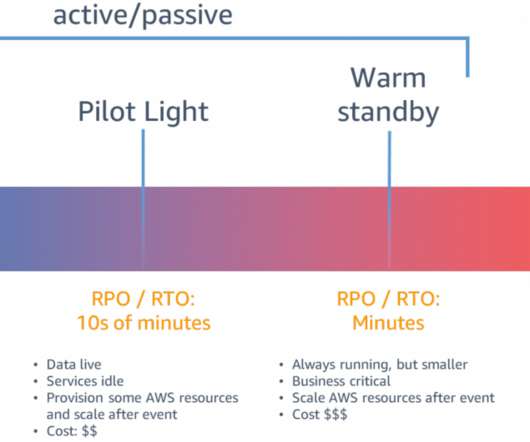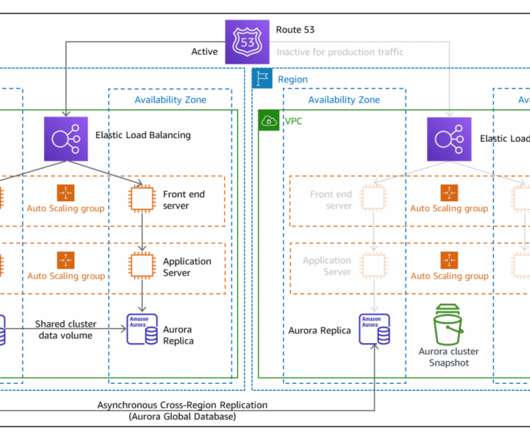Disaster Recovery (DR) Architecture on AWS, Part I: Strategies for Recovery in the Cloud
AWS Disaster Recovery
APRIL 5, 2021
Figure 2 shows the four strategies for DR that are highlighted in the DR whitepaper. If data needs to be restored from backup, this can increase the recovery point (and data loss). If such a disaster results in deleted or corrupted data, it then requires use of point-in-time recovery from backup to a last known good state.











Let's personalize your content